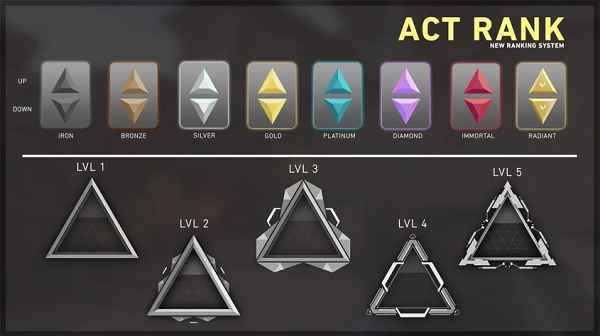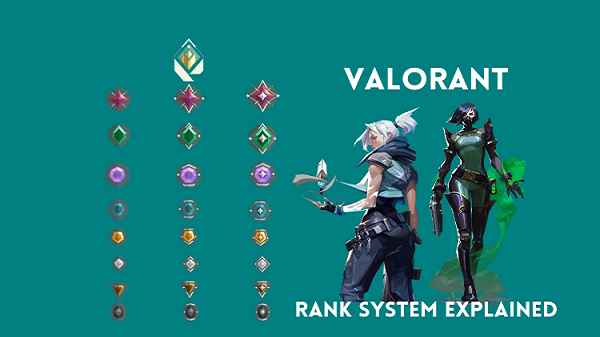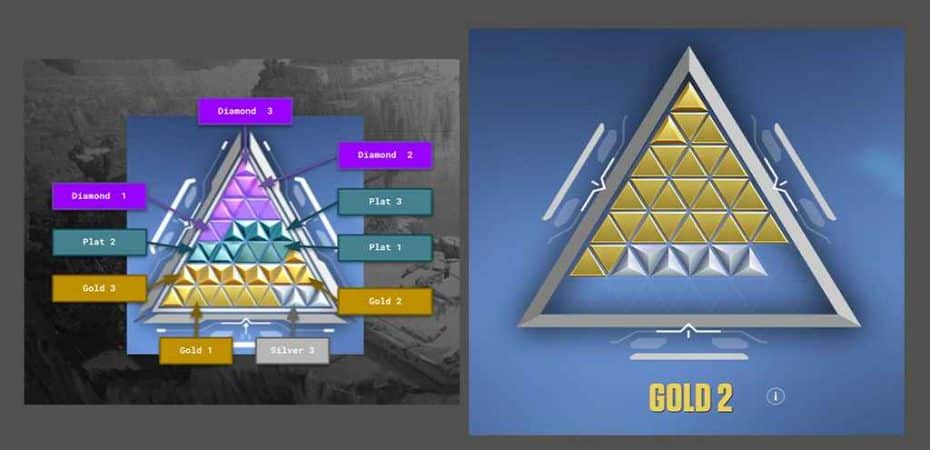In the fast-paced world of Valorant, where every second counts and teamwork is key, understanding the Ranked System is crucial for your competitive journey. In this detailed guide, we’ll delve deep into the Valorant Ranked System, explaining its order and distribution, helping you climb the competitive ladder with ease.
The Basics of Valorant Ranked System

The Valorant Ranked System is designed to provide a competitive environment for players, where skill and teamwork are paramount. To kick things off, let’s break down the basics:
Valorant Ranked Tiers
The Valorant Ranked System consists of several tiers, each representing a different level of skill. These tiers include Iron, Bronze, Silver, Gold, Platinum, Diamond, Immortal, and Radiant. As you progress, your goal is to climb from lower tiers to higher ones.
Promotion and Demotion
Ranking up in Valorant isn’t a one-way street. If you consistently perform well, you can earn promotions, moving up to the next tier. Conversely, if your performance falters, you may face demotion to a lower tier.
MMR (Matchmaking Rating)
Behind the scenes, Valorant employs an MMR system to match players of similar skill levels. It ensures that you face opponents and teammates who are on a similar playing field, creating a fair and competitive environment.
The Order of Valorant Ranked Matches
Understanding the order of Valorant Ranked matches is crucial to your success in the competitive scene. Let’s break it down step by step:
Placement Matches
When you first enter Valorant’s Ranked Mode, you’ll need to play placement matches. These determine your initial rank, placing you in a tier that reflects your skill level.
Matchmaking
Once you’ve completed your placement matches, Valorant’s matchmaking system takes over. It pairs you with players of similar MMR, ensuring every match is competitive.
Competitive Matches
Competitive matches are the core of Valorant’s Ranked System. Winning these matches earns you RR (Rating Points), while losses result in a decrease in RR. Your performance here directly affects your rank and tier.
Promotions and Demotions
If you consistently perform well and earn enough RR, you’ll find yourself on the path to promotion. On the other hand, repeated losses can lead to demotion. Staying in your current tier requires maintaining your performance.
Competitive Tiers
Valorant’s competitive tiers are structured as Iron, Bronze, Silver, Gold, Platinum, Diamond, Immortal, and Radiant. Climbing these tiers is an achievement, and each one presents its own set of challenges.
Distribution of Valorant Ranks

Now, let’s dive into the distribution of ranks in Valorant’s competitive landscape. It’s essential to understand how many players are in each tier and what it takes to rise through the ranks.
Iron to Gold
The Iron to Gold tiers are where most players start their competitive journey. Iron and Bronze are the entry-level tiers, making up a significant portion of the player base. To progress from Iron to Gold, consistent improvement in your gameplay and teamwork is the key.
Platinum and Diamond
As you reach Platinum and Diamond tiers, the competition becomes stiffer. These tiers have a more balanced distribution of players, and climbing here requires a higher level of skill, strategy, and communication.
Immortal and Radiant
The Immortal and Radiant tiers are the elite levels of Valorant competitive play. Only the top players in the world can achieve these ranks. Competition is fierce, and staying at the peak of your game is a must to maintain these prestigious positions.
Valorant Ranked System Tips and Strategies
To navigate the Valorant Ranked System successfully, here are some tips and strategies:
Communication
Effective communication with your team is essential. Use voice chat or text messages to coordinate strategies and callouts.
Map Knowledge
Understanding the maps is critical. Know the callouts, common angles, and strategies for each map in the competitive rotation.
Aim Training
Sharpen your aiming skills through aim training routines and exercises. Precision shooting is crucial in Valorant.
Team Composition
Pay attention to team composition. A well-rounded team with different agent abilities can make a significant difference.
Adaptability
Adapt to the situation. Valorant is a dynamic game, and flexibility in strategy is often the key to success.
Stay Positive
Maintain a positive attitude, even in the face of losses. A positive mindset can help you bounce back and improve.
Review Your Matches
After each game, review your performance. Identify areas of improvement and work on them.
Conclusion
In the world of Valorant, the Ranked System serves as the ultimate test of skill and teamwork. As you climb the competitive ladder from Iron to Radiant, remember that every match is an opportunity to grow and excel. By understanding the order and distribution of ranks, and by following the tips and strategies, you can forge your path to success in Valorant’s competitive arena. So, gear up, communicate effectively, aim true, and claim your spot among the elite in Valorant’s Ranked System!
Read also:



